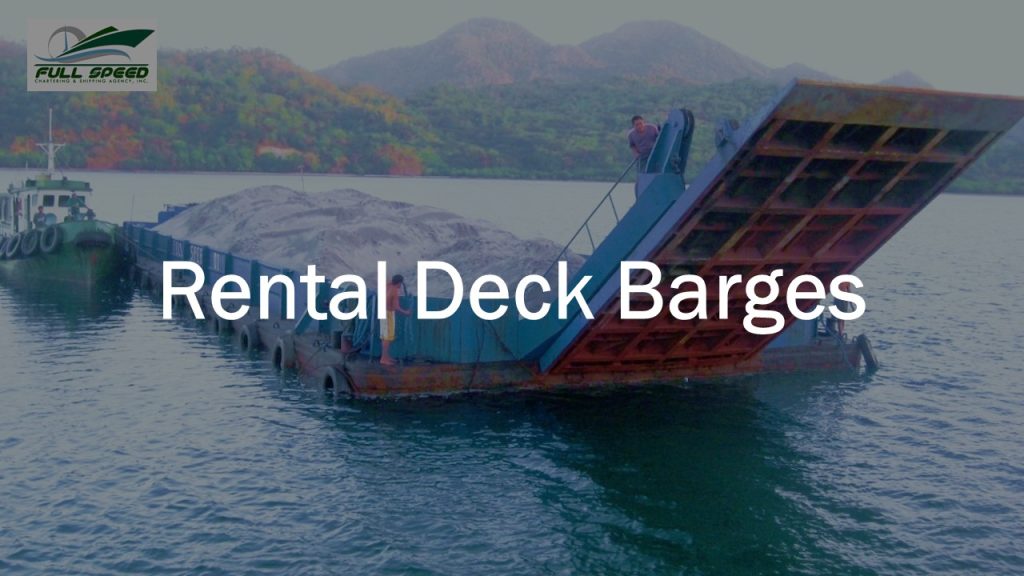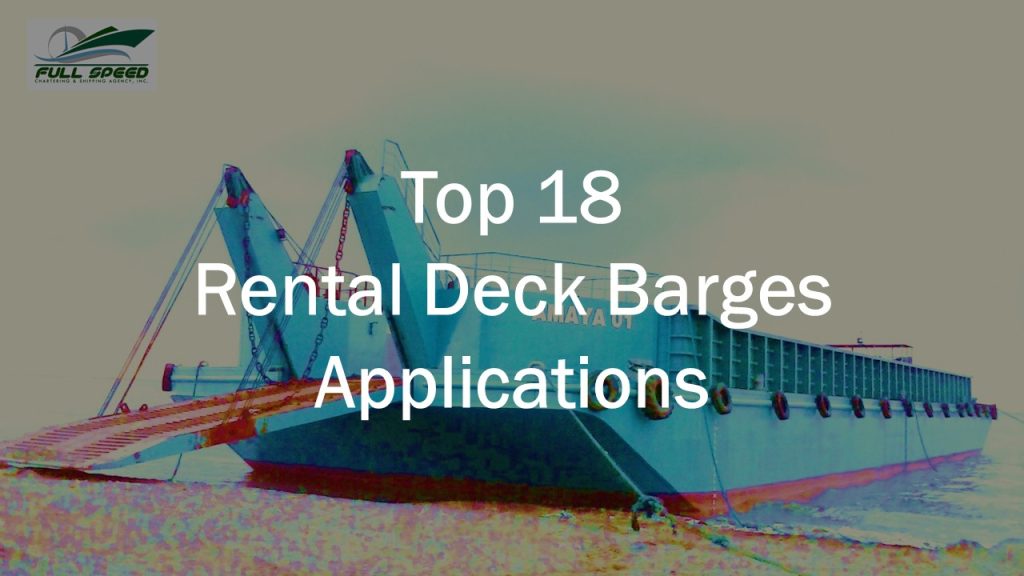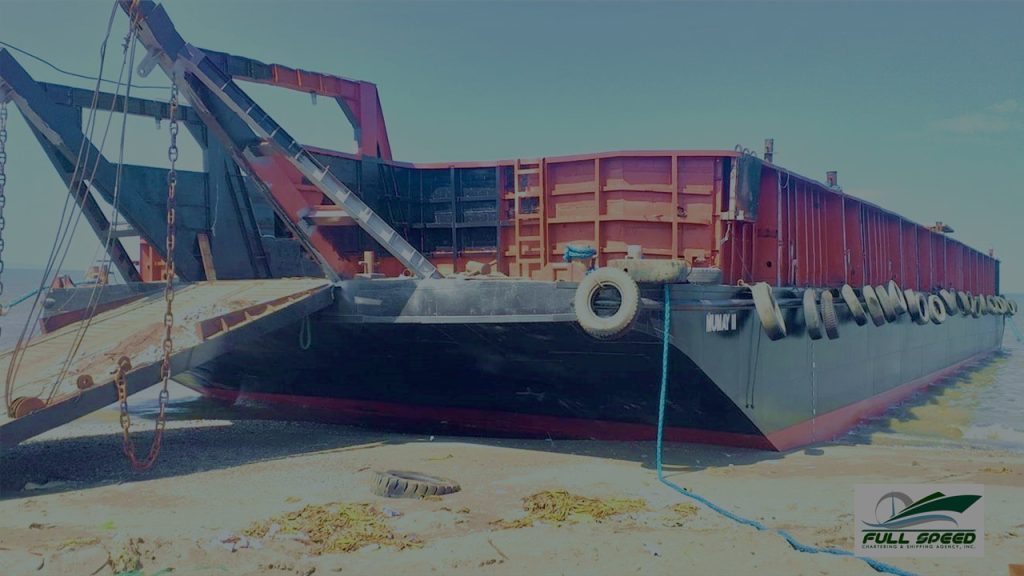When it comes to transporting heavy and oversized cargo in the Philippines, barges have proven to be an essential tool in the logistics industry. These sturdy vessels, designed to carry bulk materials across rivers, canals, and even open seas, offer a unique set of advantages that make them ideal for handling project cargo. From their ability to navigate through shallow waters and access remote locations to their versatility in accommodating various types of goods, barges have become indispensable for a wide range of applications. In this article, we will explore ten fascinating ways in which barges for project cargo are utilized, showcasing their immense capabilities and highlighting the crucial role they play in modern-day freight transportation.
Click here to view our barges.
Click here to view our project cargo.
Overview of Project Cargo and Its Transportation Challenges in the Philippines
Project cargo refers to the transportation of oversized, heavy, or complex equipment or materials that cannot be easily transported using standard methods. These cargoes often require specialized handling techniques and equipment, adding a layer of complexity to the transportation process.
One of the major challenges in transporting project cargo is finding suitable modes of transportation that can accommodate the size and weight of the cargo. Traditional methods such as road transport may not be feasible due to weight restrictions or geographical obstacles. In such cases, alternative modes like barges become crucial. Barges offer significant advantages for moving project cargo, as their large capacities allow for the transportation of oversized items like machinery, turbines, or bridge components that might not fit on regular trucks or rail cars.
However, transporting project cargo via barges also presents its own set of challenges. The lack of infrastructure and navigational constraints in certain regions may limit access to waterways suitable for barge operations. Additionally, weather conditions such as strong currents or low water levels can hinder navigation and increase risks during transport.
Despite these challenges, project cargo continues to play a vital role in various industries, such as construction, energy production, and infrastructure development. As large-scale projects become more common in the Philippines, it is essential to understand the unique requirements and challenges associated with project cargo transportation in order to ensure safe and efficient delivery.

Barge Transportation in the Philippines: Advantages and Benefits
Barge transportation offers numerous advantages and benefits that make it an attractive option for project cargo in the Philippines. One key advantage is the ability to transport heavy and oversized loads that may be challenging or even impossible to transport by other means. Barges have a high load capacity and can accommodate large, bulky items such as construction equipment, machinery, or even entire structures.
Another advantage of barge transportation is its cost-effectiveness. Compared to other modes of transportation like trucking or rail, barges offer a more economical solution for long-distance shipping. This is particularly true when it comes to moving project cargo over waterways, where barge transportation can be significantly cheaper than alternative options.
Furthermore, barge transportation has environmental benefits. Unlike trucks, barges operate on water instead of roads, reducing traffic congestion and minimizing carbon emissions. By utilizing inland waterways for transport needs, barge transportation helps alleviate the strain on highways and lowers the overall environmental impact of transportation.
The advantages and benefits offered by barge transportation in the Philippines make it a highly advantageous option for project cargo shipments. From its capability to handle heavy loads to its cost-effectiveness and environmental friendliness, barges provide a reliable and efficient means of transporting goods that are essential in various industries.
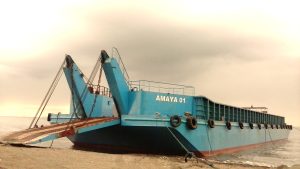
Applications of Barges for Project Cargo:
Barges have played a crucial role in the transportation of project cargo in the Philippines, offering unique advantages that no other mode of transport can provide. One prominent application of barges for project cargo is their ability to navigate shallow waterways and reach remote locations that are inaccessible to other vessels. This makes them the ideal choice for transporting heavy and oversized equipment to construction sites or infrastructure projects located near rivers or lakes.
Another significant application of barges for project cargo is their versatility in handling a wide range of cargoes. Whether it’s transporting large machinery, construction materials, or even modular components for offshore installations, barges can accommodate diverse types of cargo due to their spacious deck design and adjustable loading configurations. This flexibility not only simplifies the logistics process but also reduces overall costs by eliminating the need for additional specialized equipment.
Furthermore, barges offer a safe and stable platform for transporting sensitive and fragile cargo. With minimal vibrations compared to road or rail transport, they can ensure the integrity and safety of high-value equipment during transit. Additionally, the option to secure cargo on deck or within watertight compartments provides an extra layer of protection against external factors such as weather conditions or potential theft.
Barge transportation has proven its value time and again when it comes to project cargo in the Philippines. Their unique capabilities in navigating challenging waterways, accommodating diverse cargo types, and ensuring security make them an indispensable asset for any large-scale project requiring efficient shipping solutions.
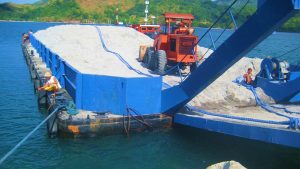
Here are the top 9 applications of barges for project cargo in the Philippines:
1. Offshore Oil and Gas Industry: Using Barges for Project Cargo
In the offshore oil and gas industry, barges play a crucial role in transporting project cargo to remote sites. These massive floating vessels are capable of carrying heavy equipment, drilling rigs, and even entire modules for offshore platforms in the Philippines. One of the main advantages of using barges for project cargo is their ability to navigate shallow waters and access areas that would otherwise be off-limits to larger ships. This is especially valuable in offshore operations, where many exploration and production sites are located in shallower waters close to shore.
Moreover, barges offer cost-effective transportation solutions for the oil and gas industry. By utilizing these versatile vessels, companies can avoid costly infrastructure development, such as the construction of dedicated roads or harbors at remote locations. Instead, they can simply load project cargo onto a barge at a more accessible port or fabrication yard and transport it directly to the offshore site. This not only saves time but also reduces overall project costs.
Furthermore, barge transportation provides flexibility in terms of scheduling and logistics management for the oil and gas industry. These vessels are not dependent on set routes or schedules like traditional shipping methods. Instead, they can be customized to meet specific project needs with regard to timing, delivery locations, and cargo requirements.
Using barges for project cargo in the offshore oil and gas industry offers numerous advantages, including accessibility to remote sites, cost-effectiveness, and flexible logistics solutions.

2. Construction and Infrastructure Projects: Using Barges for Project Cargo
The use of barges for project cargo in construction and infrastructure projects has become increasingly popular in recent years. Barges offer a unique solution for transporting heavy and oversized equipment, materials, and supplies to remote locations or areas with limited access by road or rail in the Philippines. These versatile water vessels can navigate through rivers, lakes, and even coastal waters, making them an ideal choice for projects located near bodies of water.
One of the key advantages of using barges for project cargo is their ability to transport heavy machinery and equipment that may be too large or cumbersome to be transported over land. This includes components such as cranes, excavators, generators, and even prefabricated building modules. By utilizing barges, project managers can ensure the timely delivery of these essential items without having to worry about logistical obstacles. Additionally, barges are often equipped with specialized loading and unloading systems that can handle the weight and size requirements of such cargo.
Furthermore, using barges for project cargo can also help mitigate environmental impacts compared to traditional transportation methods. Barge transportation is generally more fuel-efficient than trucking or even rail transport when it comes to moving large volumes of goods over long distances. This not only reduces carbon emissions but also helps alleviate traffic congestion on already congested roadways. By taking advantage of existing navigable waterways, construction companies can minimize their ecological footprint while still ensuring efficient delivery of materials to construction sites.
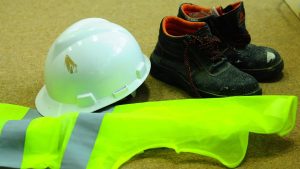
3. Wind Energy Projects: Using Barges for Project Cargo
Wind energy projects are becoming increasingly popular as the world seeks to transition to clean and renewable sources of power in the Philippines. However, constructing wind farms in offshore locations presents unique challenges. One of the key challenges is transporting the massive components needed for these wind farms, such as turbine blades and tower sections. This is where barges come into play.
Barges offer a cost-effective and efficient solution for transporting project cargo for wind energy projects. With their large cargo-carrying capacity and ability to navigate shallow waters, barges can transport heavy and oversized components to even remote offshore locations. Barges also provide flexibility in terms of scheduling, as they can be loaded with multiple components from different manufacturers at different ports before being transported to the project site.
Using barges for wind energy projects has several advantages over traditional transportation methods like trucks or railroads. Firstly, barges have a significantly lower impact on the environment compared to other modes of transportation, reducing carbon emissions significantly. Secondly, these water-based vessels offer a safer option for transporting heavy equipment, minimizing the risks associated with accidents that could occur on land during long-distance journeys.
In conclusion, employing barges for project cargo in wind energy projects brings numerous benefits, including cost savings, logistical advantages, environmental friendliness, and enhanced safety measures throughout the transportation process. As more countries embrace renewable energy initiatives and invest in offshore wind farms over conventional power generation methods, utilizing barges will continue to be an integral part of realizing these sustainable future goals while maximizing efficiency within this rapidly expanding industry sector.

4. Mining and Resource Operations: Using Barges for Project Cargo
Mining and resource operations require efficient transportation methods for project cargo, and barges have emerged as a reliable solution in the Philippines. Barges offer several advantages in this sector, including their ability to transport large quantities of materials over long distances. Unlike trucks or trains, barges can navigate both inland waterways and coastal areas, providing access to remote mining sites that may otherwise be difficult to reach.
One of the key benefits of using barges for project cargo in mining and resource operations is their low environmental impact compared to other forms of transportation. Barge transportation emits fewer greenhouse gases per ton-mile than trucks or trains, making it a more sustainable choice for moving large volumes of materials. Additionally, barges have the potential to reduce congestion on roads by taking heavy freight off highways.
In addition to their environmental advantages, barges also offer cost savings in the mining and resource sectors. By utilizing waterways as a mode of transportation, companies can lower their shipping costs significantly compared to traditional land-based methods. This reduction in costs can lead to increased profitability for mining companies while also ensuring the efficient movement of resources from extraction sites to export terminals.
In conclusion, the use of barges for project cargo in mining and resource operations provides numerous benefits, such as improved access to remote locations, reduced environmental impact, and cost savings. With these advantages in mind, it is not surprising that more companies are turning to barge transportation as a viable solution for moving materials from mines or extraction sites efficiently.
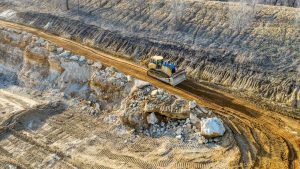
5. Heavy Equipment Transport: Using Barges for Project Cargo
Heavy equipment transport can often be a challenging task, especially when it involves moving oversized and overweight cargo in the Philippines. In such cases, using barges for project cargo can provide an efficient and cost-effective solution. Barges offer several advantages over traditional transportation methods, including the ability to carry extremely heavy items, easy accessibility to waterfront locations, and reduced infrastructure requirements.
One of the main benefits of using barges for heavy equipment transport is their capacity to handle large and heavy loads. Barges are specifically designed to carry heavy cargo across waterways and can accommodate items that would be impossible or costly to transport by road or air. This makes them ideal for industries such as construction, oil and gas, mining, and renewable energy, which frequently require the transportation of oversized machinery or equipment.
Another advantage of using barges is their accessibility to waterfront locations. Many projects exist along rivers, lakes, or coastal areas where direct access by road may be limited or nonexistent. In such cases, utilizing barges allows for easy delivery of heavy equipment directly from manufacturing plants or storage facilities located near water bodies. This not only saves time but also eliminates the need for additional coordination between different modes of transport.
Moreover, transporting heavy machinery on barges significantly reduces infrastructure requirements compared to other transportation methods like trucks or trains. Since barges primarily operate on waterways instead of roads or railways, they do not rely heavily on existing infrastructure networks nor contribute to traffic congestion issues often faced with land-based transportation.

6. Environmental Cleanup Projects: Using Barges for Project Cargo
One of the most critical applications of barges for project cargo is in environmental cleanup projects in the Philippines. These projects often require the transportation of heavy machinery, equipment, and materials to remote locations that are only accessible by waterways. Barges are ideal for this purpose as they have a large carrying capacity and can navigate through shallow waters, making them efficient and cost-effective means of transport.
Moreover, using barges for environmental cleanup projects minimizes the environmental impact associated with land-based transportation methods. Heavy trucks and vehicles used in traditional modes of transport cause soil erosion, damage road infrastructure, and contribute to air pollution. On the other hand, barges produce minimal emissions compared to their truck counterparts. Furthermore, by utilizing waterways instead of roads or railways, barges help reduce traffic congestion on already overburdened highways while avoiding potential accidents and delays caused by road construction or accidents.
By utilizing barges for environmental cleanup projects, we not only ensure the efficient and timely transportation of project cargo but also minimize negative effects on both the surroundings and public health. The versatility offered by these watercraft enables us to access hard-to-reach areas without destroying fragile ecosystems or disrupting local communities through excessive noise pollution or increased traffic congestion. As we continue our efforts to protect our environment and promote sustainable practices, it is imperative that we explore alternative means of transport, like barges, to facilitate future environmental cleanup projects effectively.

7. Philippine Military Operations and Defense Projects: Using Barges for Project Cargo
Philippine military operations and defense projects often involve the transportation of heavy and oversized equipment. In such cases, using barges for project cargo can offer several advantages. First, barges are capable of carrying immense loads, making them perfect for transporting tanks, armored vehicles, and other machinery that cannot be easily transported over land or by air. The large deck space on barges allows for efficient loading and unloading processes as well.
In addition to their load-carrying capacity, barges also offer increased flexibility in terms of deployment. They can access remote areas with waterways that may not be accessible by other transport modes, allowing military forces to reach otherwise inaccessible locations quickly and efficiently. This is especially crucial in defensive projects, where speed and a rapid response time are essential.
Finally, utilizing barges for military projects can lead to significant cost savings compared to traditional transportation methods. Barges tend to have lower operating costs than trucks or aircraft since they require fewer personnel to operate. Moreover, using waterways reduces reliance on expensive fuel consumption associated with road or air transport.
The incorporation of barges in military operations and defense projects presents an innovative solution that can enhance logistical capabilities while reducing costs. By leveraging the unique features offered by these vessels, such as their high load capacities, flexibility in deployment, and cost-effectiveness – militaries around the world can strengthen their operational efficiency and effectiveness when it comes to moving critical equipment across various terrains.
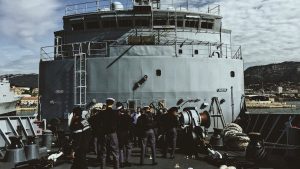
8. Disaster Relief and Emergency Response: Using Barges for Project Cargo
During times of disaster and emergencies, the importance of effective and efficient relief efforts cannot be overstated. Barges play a crucial role in disaster relief and emergency response by providing a versatile and reliable transportation solution for project cargo in the Philippines. Whether it’s delivering essential supplies, heavy equipment, or even temporary shelters to affected areas, barges offer unique advantages that make them an invaluable asset during crisis situations.
One key advantage of using barges for project cargo in disaster relief is their ability to access remote or hard-to-reach areas. In many cases, disaster-stricken regions may be inaccessible by road or have severely damaged infrastructure. Barges can navigate rivers, waterways, and even shallow waters to reach these isolated areas with ease. This makes them an ideal choice for delivering aid where traditional land-based transport methods are not viable.
Additionally, barges have the capacity to carry large volumes of cargo at once. This allows for more efficient transportation of supplies, reducing the need for multiple trips or the reliance on limited ground transport options such as trucks or helicopters. By utilizing the space on board barges effectively, relief organizations can maximize their resources and deliver aid in a timely manner to those in need.
When it comes to disaster relief and emergency response efforts, utilizing barges for project cargo is a smart choice due to its accessibility and capacity advantages. These floating vessels serve as lifelines during crises by overcoming logistical challenges posed by damaged infrastructure while ensuring prompt delivery of vital supplies to affected regions.

9. Scientific Research and Exploration: Using Barges for Project Cargo
Scientific research and exploration often require the transportation of specialized equipment, vehicles, or materials to remote locations. In these cases, barges can be a game-changer for project cargo. These flat-bottomed vessels are designed to transport heavy and oversized loads, making them ideal for carrying scientific instruments, research facilities, or even entire labs to hard-to-reach destinations in the Philippines.
One of the key benefits of using barges for scientific research projects is their ability to navigate through shallow waters and river systems that may be inaccessible to other types of vessels. This opens up a whole range of possibilities for researchers who need to reach remote riverside or coastal areas where important data collection needs to take place. The barge’s ability to anchor in close proximity also allows scientists and explorers to spend more time at the location without worrying about limited resources or scheduling constraints.
Moreover, with advancements in engineering and technology, barges can now be customized with sophisticated onboard facilities specifically designed for scientific projects. These specialized features may include temperature-controlled environments for maintaining delicate samples or equipment during transit, as well as advanced communication systems that enable real-time data transfer between the barge and onshore researchers.
The use of barges for project cargo in scientific research and exploration offers a versatile solution that enhances accessibility and efficiency while overcoming geographic limitations. As we continue pushing the boundaries of knowledge through new discoveries and explorations in diverse fields like marine biology or geology, barges prove themselves as invaluable tools facilitating breakthroughs in our understanding of the natural world.

Case Studies: Real-World Examples of Successful Barge Transportation Projects in the Philippines
One remarkable case study of successful barge transportation projects in the Philippines is the Manila Bay Reclamation Project. This ambitious endeavor aimed to transform a vast expanse of Manila Bay into a thriving economic and residential hub. Barges played a critical role in transporting construction materials such as sand, gravel, and rocks from nearby sources to the project site. By utilizing barges, the project team was able to efficiently transport large quantities of materials while minimizing road congestion and reducing carbon emissions.
Another noteworthy example is the Batangas Port Expansion Project, which sought to enhance port facilities to accommodate increasing maritime trade demands. Barges were utilized to transport heavy equipment, including cranes and other machinery, from various locations within the Philippines. These barges provided a cost-effective solution as they could navigate shallow waters and access smaller ports that traditional cargo vessels couldn’t. This allowed for efficient delivery of equipment to the project site without extensive land transportation or expensive modifications to existing infrastructure.
In these real-world examples, it becomes evident that barge transportation plays an integral role in facilitating large-scale projects in the Philippines. By leveraging their flexibility, cost-effectiveness, and ability to access otherwise inaccessible areas, barges provide unique advantages over other modes of transportation.

Are You Looking for Barges for Project Cargo in the Philippines?
Full Speed Chartering and Shipping Agency, Inc. (FSCSAI) is the go-to provider of well-maintained barges for project cargo in the Philippines. With a vast fleet and years of experience in the industry, FSCSAI offers a range of barge sizes to cater to different project requirements. Whether you need to transport heavy equipment, construction materials, or oversized cargo, their dedicated team ensures smooth operations and timely delivery.
- Email us: info@fullspeedchartering.com
- Facebook Messenger: Click here
- Click here to inquire
One key advantage of using barges for project cargo in the Philippines is their versatility. Barges can access remote areas and navigate through shallow waterways where traditional vessels may face limitations. This makes them an ideal choice for projects located near rivers or coastal regions. Additionally, barges have a large deck space that can accommodate various types of cargo, providing flexibility and efficiency in transportation.
In addition to their versatility, barges offer cost-effective solutions for project cargo transportation. Compared to trucking or rail services, barges typically have lower operational costs due to their high carrying capacity. Moreover, by utilizing waterways instead of congested roads or railways, barges help reduce traffic congestion and minimize carbon emissions. This not only saves costs but also contributes to sustainable transportation practices.
When it comes to transporting project cargo efficiently and reliably in the Philippines, Full Speed Chartering and Shipping Agency Inc.’s well-maintained barges are a trusted choice that combines versatility with cost-effectiveness while minimizing environmental impact.
Takeaway: Versatility and Efficiency of Barges for Project Cargo Transport in the Philippines
In conclusion, barges have proven to be a highly versatile and efficient mode of transportation for project cargo. With their ability to navigate rivers, canals, and even open seas, barges offer a unique advantage in accessing remote or hard-to-reach areas where other modes of transportation may not be feasible.
Additionally, the large carrying capacity of barges in the Philippines allows for the transportation of bulky and heavy project cargo that would otherwise require multiple trucks or train carriages. This not only reduces logistics costs but also minimizes the environmental impact associated with multiple trips by road or rail.
Furthermore, barges offer flexibility in terms of loading and unloading methods. Whether it’s through specialized ramps or cranes at ports or even directly onto shorelines with onboard equipment, barges provide efficient handling options that can save time and resources during project cargo operations.
Overall, the versatility and efficiency of barges for project cargo transportation make them a reliable choice for industries ranging from construction to energy. As global trade continues to evolve and projects become larger in scale, utilizing barges for transporting project cargo will undoubtedly play a crucial role in ensuring smooth logistics operations while minimizing costs and the environmental footprint.

